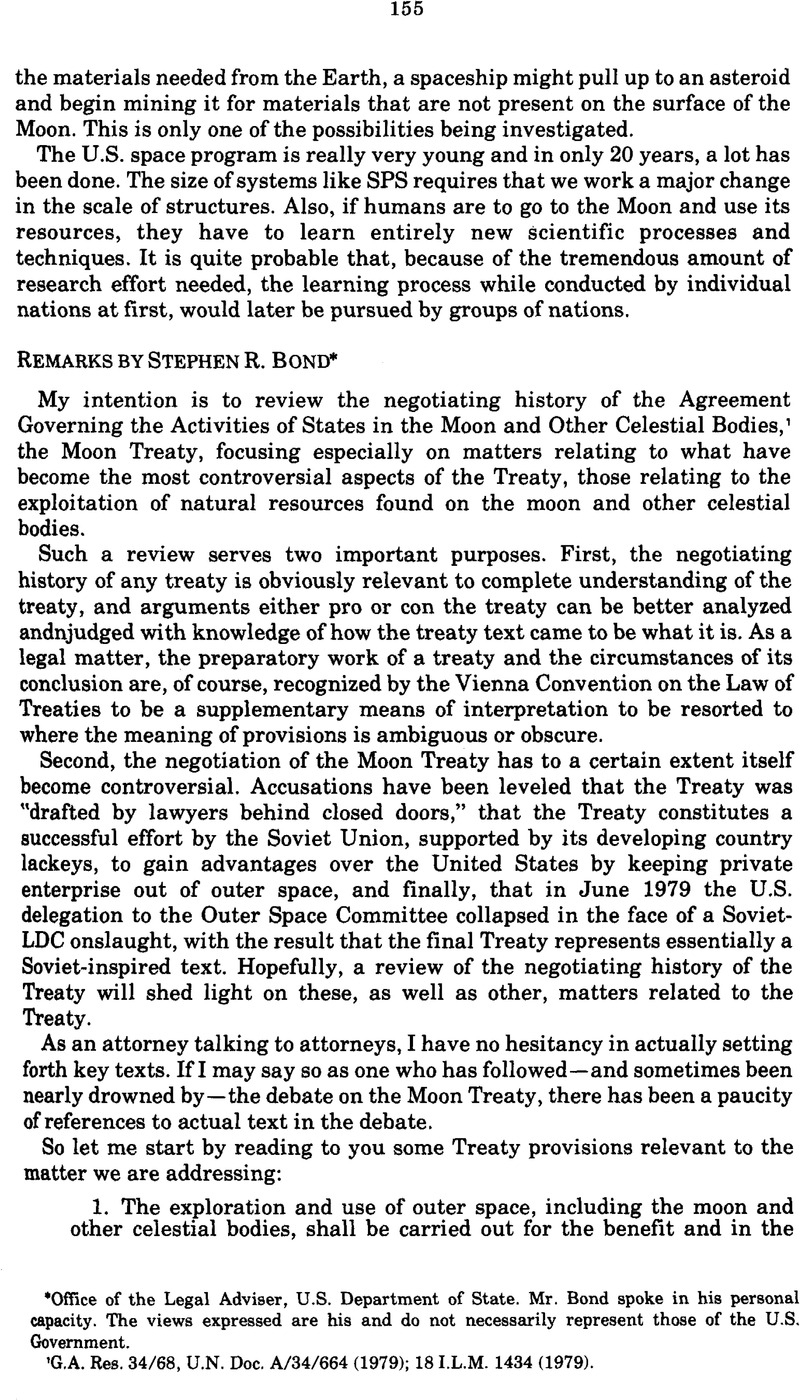No CrossRef data available.
Article contents
Remarks by Stephen R. Bond
Published online by Cambridge University Press: 28 February 2017
Abstract

- Type
- The Moon Treaty: Should the United States Become a Party?
- Information
- Copyright
- Copyright © American Society of International Law 1980
References
1 G.A. Res. 34/68, U.N. Doc. A/34/664 (1979); 18 I.L.M. 1434 (1979).
2 Outer Space Treaty, Jan. 27, 1967, 18 U.S.T. 2412, T.I.A.S. No. 6347.
3 Id.
4 Id. at 2413.
5 Id. at 2415.
6 G.A. Res. 1348, (XIII) (1958).
7 Supra, Note 1. Art. II, para 2: “The moon is not subject to national appropriation by any claim of sovereignty, by means of use or occupation, or by any other means.” Art II, para. 3: “Neither the surface nor the subsurface of the moon, nor any part thereof or natural resources in place shall become property of any state … .”
8 Art. II, paras. 3, 4, 5, 7


